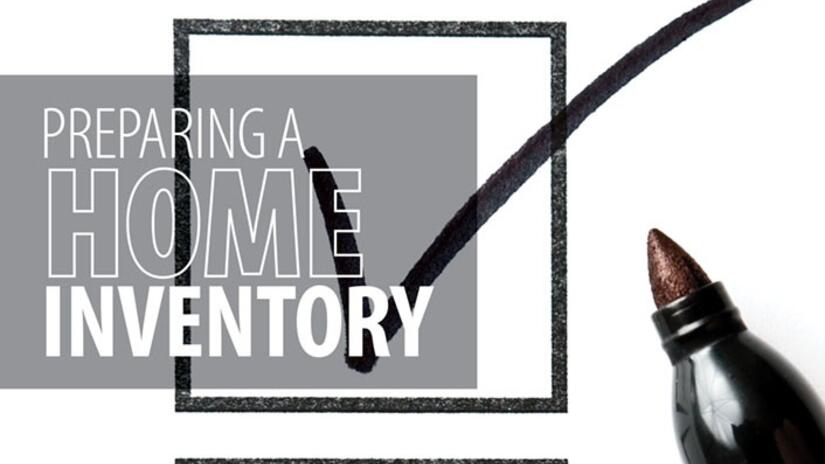
Creating a detailed home inventory is essential for effective disaster recovery and insurance claims. Rainbow Restoration highlights key steps for homeowners.
|
A home inventory may seem like a task too daunting to attempt, but in the event of a home emergency like a fire, flood, tornado, hurricane, or other disaster, you will be extremely grateful you set aside the time to complete it. The last thing on your mind should be taking inventory of possessions.
Planning ahead and creating a home inventory beforehand is the best way to avoid extra stress and financial hassles following a disaster. As for the best way to complete a home inventory, it all depends on your preferences.
How to Create a Home Inventory
There are many options on how to complete a home inventory, but they all accomplish the same goal of recording your possessions should you ever need to file a claim with your insurance.
Here’s a closer look at a few of the options:
- Make a list. While this is not the most fun way to record all of your possessions, it has worked in the past and is still accepted by insurance providers. The list can be broken into categories by room, appliance type, item value, or how you feel it best makes sense. Be sure to provide the make and model number or serial number to better assist in getting the item replaced appropriately.
- Take pictures of items. Taking photos of all your items is a great way to show condition, record serial numbers and show placement in your home. Depending on how you would prefer to document the item, the photos can be printed and information written on the back or a photo file can be created on the computer with information typed in the notes. Be sure to save the file to a location accessible online in case your computer is destroyed. You can email the images to yourself or save them to Google Drive for safekeeping… and it is free!
- Video each room in your house. Of all the ways to document items in your home, a video recording is probably the quickest, but may not be the most accurate unless you know every model number of every item in your home. If disaster occurs and you have never completed a home inventory, a video recording would be a great way to help document the items in your home. Again, a video could also be uploaded to a private account on Google Drive.
- Seek the right software. Software designed specifically for preparing a home inventory is available. It may also be the most accurate way to document and provide information quickly to your insurance company in the event of disaster. Remember to create a copy somewhere other than your computer in case the computer is ever damaged. The Insurance Information Institute (I.I.I.) has a secure online home inventory program that is free to the public. It also provides a guided tour on how to use the online inventory. If you are skeptical, the I.I.I. is a reputable company with all the top-tier insurance providers as members, so your information is secure. You can also ask your insurance provider to recommend the software for your home inventory.
- Download an App. A quick search on Google Play or the Apple App Store presents a variety of apps specifically to be used for a home inventory. Allstate and the I.I.I. have apps for your smartphone to record your home inventory with categories, photo features and written descriptions. Be sure to investigate whom you are providing a list of the items in your home and check out the reviews and creator of the app to avoid providing information to the wrong people. Always use apps with caution and only use those from reliable sources.
How to Calculate the Value of Your Home's Belongings
The next step in make a home inventory is setting a value to those items. Most insurance providers compensate appropriately for items, but what if the value of the item increases or the price of a comparable stainless steel refrigerator increases?
It is the homeowner’s responsibility to report the make, model and serial number to provide reasonable compensation for items. Family heirlooms and antiques that you feel are priceless will need to be appraised or a reasonable value established. Search online or ask antique dealers for a professional estimate on the value of an antique in your home.
If you have many antiques or valuable items like paintings, furniture, or other items, have an appraisal completed and submitted to your insurance provider. If the items are highly valuable, you may be required to have separate insurance on those items; otherwise, you may not be compensated fully for the items.
Legal documents are also very important to make copies of and store in a secondary, secure location such as a safe deposit box. Birth certificates, passports, wills, financial records, insurance policies and receipts are very important and need to be kept in a safe place.
If a safe deposit box is not something you would like, get a safe for your home that is rated to withstand a fire or flood. The more prepared you are in an emergency the faster you and your insurance provider can get your life back to normal again.
Residential Damage Restoration Services from Rainbow Restoration
Rainbow Restoration helps residents reclaim their cherished possessions and restore their spaces after disaster strikes. For more information on our residential restoration services, call or schedule an appointment online with Rainbow Restoration today!
Related Articles
The Five Most Important Things to Have on Your Home Inventory
Try These Programs and Apps for Your Home Inventory
What Can Be Safely Salvaged After Fire Damage?
How to Store Sensitive Materials to Keep Them Safe from Floods
